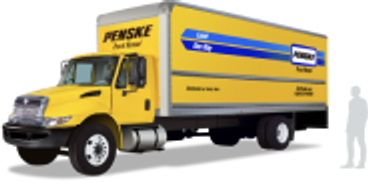How To Protect Your Floors When Moving

Moving to a new home can be a difficult undertaking and an exhilarating adventure. In the chaos of packing and moving furniture, safeguarding your floors sometimes gets missed. Protecting your floors from damage is essential whether you’re moving into a new home or out of a rental. Since floors are an expensive investment, protecting them might help you avoid future issues with landlords or expensive repairs. Below, you will find some tips to help you maintain spotless floors as you move.
1. Plan Ahead
Make preparations for how you’ll safeguard your floors before moving day. Examine the kind of flooring in each space, including carpet, tile, hardwood, and laminate. Knowing your flooring type can help you select the appropriate materials and techniques, as different flooring types call for different precautions.
2. Gather the Right Materials
Here are some essential materials you’ll need to protect your floors:
- Furniture Sliders: These are small, padded disks that fit under the legs of your furniture. They make it easier to slide heavy items across the floor without scratching or denting it.
- Moving Blankets or Pads: Thick, padded blankets or pads can be draped over floors to absorb impact and protect against scratches.
- Plastic Sheeting or Drop Cloths: Plastic sheeting can be laid down to shield your floors from dirt and damage in areas with heavy foot traffic, especially when moving furniture.
- Corrugated Cardboard: Large sheets of cardboard can be used to cover hardwood or tile floors. They provide a protective barrier that can absorb impacts and prevent scratches.
- Masking Tape or Painter’s Tape: Use this to secure protective materials like plastic sheeting or cardboard to the floor, ensuring they stay in place during the move.
3. Prepare the Area
Before moving anything, prepare the area by cleaning your floors. Dirt and debris can cause scratches, so sweep or vacuum thoroughly. Once the area is clean, start laying down your protective materials.
- For Hardwood Floors: Lay down moving blankets or cardboard in high-traffic areas. Use furniture sliders to prevent scratches when moving heavy items. Avoid using plastic sheeting directly on hardwood floors as it can trap moisture and damage the finish.
- For Carpeted Floors: Use plastic sheeting or moving blankets to cover carpeted areas. You might also want to use cardboard or heavy-duty paper to protect high-traffic zones.
- For Tile or Laminate Floors: Lay down corrugated cardboard or moving blankets to shield the surface from impacts. Be careful with heavy items that could crack tiles or chip laminate. Use furniture sliders to minimize direct contact between furniture legs and the floor.
4. Moving Day Tips
On the day of the move, take the following steps to ensure your floor protection measures are effective:
- Lift, Don’t Drag: Always lift furniture and other heavy items instead of dragging them across the floor. Dragging can cause scratches and dents, even with protective materials in place.
- Work in Teams: Having multiple people help with the move can make lifting and carrying items easier. Make sure everyone understands the importance of protecting the floors and following the plan.
- Avoid High Heels and Heavy Shoes: If possible, ask everyone involved in the move to wear soft-soled shoes or work boots. High heels and heavy shoes can create indentations and damage floors.
5. Be Cautious With Doorways and Hallways
Doorways and hallways are particularly vulnerable to damage during a move. To protect these areas:
- Use Doorway Protectors: Install cardboard or protective covers around door frames to prevent scuff marks and dents.
- Cover Hallways: Lay down extra protective material in hallways where moving items are likely to be carried. This will help absorb any impacts and protect against wear and tear.
6. Post-Move Cleanup
Once you’ve completed the move, it’s important to check for any potential damage. Remove all protective materials and inspect the floors for any signs of scratches, dents or stains.
- Clean Up: If any dirt or debris has gotten under your protective materials, clean it up promptly to avoid long-term damage. For any minor scratches or marks, you might need to use appropriate cleaning or repair products based on your flooring type.
- Repair If Necessary: If you find significant damage, address it as soon as possible. For hardwood floors, this might involve sanding and refinishing. For tiles, you might need to replace individual pieces.
Although protecting your floors during a move involves some planning and work, the advantages greatly exceed the drawbacks. You can make sure your flooring stays in great shape by utilizing the proper materials, being careful when moving, and quickly taking care of any problems.

You've decided to move. Now what? We have the planning, packing, loading, and driving tips you need to make your move a success.
Explore NowRecent Articles











